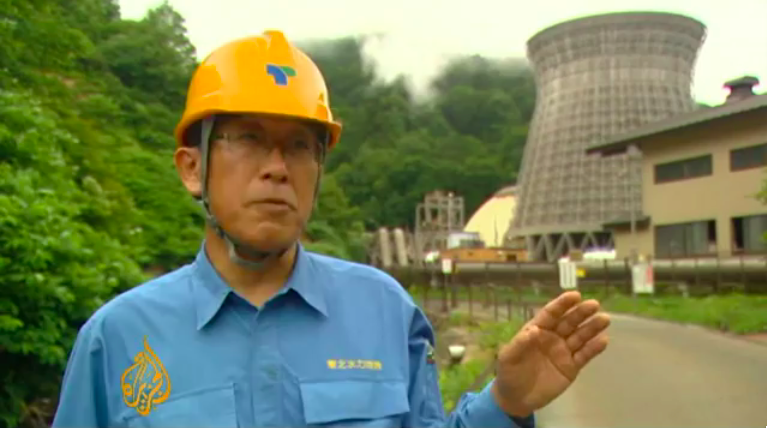The rising momentum for geothermal development in Japan
While there is a rising momentum for geothermal in Japan, there are still many issues holding back development, among others the issue of development in national parks, the feed-in-tariff for geothermal and the need for a long-term policy perspective.
Several articles recently are providing hope that finally Japan will wake up and explore its plentiful geothermal potential. Despite the underlying energy crisis following this spring’s earthquake and trsumani, Japan’s geothermal resources maintain to lay mostly untapped.
“A survey by the National Institute of Advanced Industrial Science and Technology in 2008 shows Japan ranks third worldwide in geothermal resources, behind Indonesia and the United States. There is an estimated 23.5 gigawatts of geothermal energy that could be tapped — the equivalent of 20 nuclear power plants.
The country’s primary geothermal energy sources are in the Tohoku region, especially Akita and Iwate prefectures, as well as in the south, in Oita and Kagoshima prefectures. In addition to possessing much of the energy itself, Japan also leads the way in geothermal technology, with Japanese-made technology accounting for more than 75 percent of the international market.
Although it did not really take off until after World War II, the use of geothermal energy in Japan has a long history, dating back to 1923, when early experiments in producing electricity were carried out.
Geothermal power generation increased from about 9.5 mw in 1966 to over 535 mw today. There was a spurt of growth in the 1990s as technology became more efficient, reducing the price per kilowatt hour.
“After the oil shock of the 1970s, the government conducted surveys that showed there was clearly more than 20 gw of potential geothermal power. At the time, though, the base cost of geothermal was quite expensive, and it was felt that nuclear power performed the same role,” said Sachio Ehara, professor of earth science and technology at Kyushu University and one of Japan’s top experts on geothermal power.”
“The nation’s utilities are somewhat divided in their views about the potential for geothermal. Tokyo Electric Power Co. and Kansai Electric Power Co. officials have traditionally been either uninterested in or opposed to expanding geothermal power.
In contrast, both the Kyushu and Tohoku electric power companies have been far more positive. Of Japan’s 18 geothermal plants, Kyushu Electric operates five, and Tohoku Electric runs four.”
But to this day Japan has remained at roughly 540 MW in geothermal power generation capacity, a “mere 0.3 percent of the total electricity generation capacity”.
With the renewable energy feed-in-tariff bill having been introduced, domestic development and investment could be encouraged. Furthermore the Japanese cabinet is looking at easing the development of geothermal projects in national parks and could open significant room for development.
“The Japan Geothermal Developers’ Council (JGDC) estimates that 620 MW of additional geothermal power generation capacity could be introduced at an electricity purchase price of 24.5Yen/ kWh (~US$31 cents/ kWh), which could be increased by another 1,670 MW (to a total of 2,290 MW) if new projects would be allowed within the currently prohibited national parks.
The Industry is quickly responding to the promising policy change. Mitsubishi Materials Corp. and Tohoku EPC announced a joint project employing directional drilling to access geothermal resources underneath a national park in Akita Prefecture. From the oil industry, Idemitsu Kosan and INPEX Corp. have agreed to conduct joint studies for launching geothermal power projects in Hokkaido and Akita Prefectures. Kyushu EPC will initiate studies for introducing a binary cycle power plant, the second unit in Japan after the Haccobaru Geothermal Power Plant in Oita Prefecture commissioned in 2006. JFE Engineering will launch a study on a new project capitalizing on its experience in installing steam plants at nine geothermal power station sin Japan.”
Recently also reported here on ThinkGeoEnergy, Marubeni plans to build a geothermal power plant in Northern Japan by 2013.
But things still are a bit unclear in Japan. With a single price being applied for all renewable energies, regardless of differences in cost and technical characteristics, this is not good for geothermal. “The Ministry of the Environment (MOE) estimates the geothermal introduction potential at 4,2300 MW, while the Ministry of the Economy, Trade and Industry (METI) estimates only 1,130 MW, both with a power purchase price of 20 YEN/ kWh (US$ 26 cents/ kWh).
Industrial parties have yet to establish confidence in investments, given the low profitability of the existing projects. If the government considers that geothermal power is a promising renewable energy to be extensively developed, it needs to set out a clear and consistent policy based on a long-term perspective.”
Source: Japan Times, Japan Energy Brief (IEE, pdf)


















